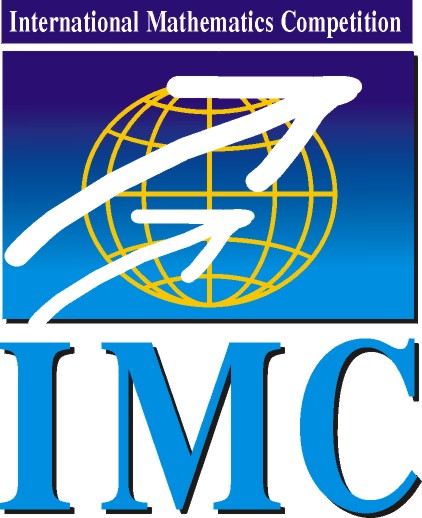
|
International Mathematics Competition
|
IMC 2024 |
| Information | Results | Problems & Solutions |
IMC2017: Day 2, Problem 9
9. Define the sequence $f_1,f_2,\ldots:[0,1)\to \RR$ of continuously differentiable functions by the following recurrence: $$ f_1=1; \qquad \quad f_{n+1}'=f_nf_{n+1} \quad\text{on $(0,1)$}, \quad \text{and}\quad f_{n+1}(0)=1. $$
Show that $\lim\limits_{n\to \infty}f_n(x)$ exists for every $x\in [0,1)$ and determine the limit function.
Proposed by: Tomáš Bárta, Charles University, Prague
Solution. First of all, the sequence $f_n$ is well defined and it holds that $$ f_{n+1}(x)=e^{\int_0^x f_n(t)\mathrm{d}t}. \tag1 $$ The mapping $\Phi:C([0,1))\to C([0,1))$ given by $$ \Phi(g)(x)=e^{\int_0^x g(t)\mathrm{d}t} $$ is monotone, i.e. if $f<g$ on $(0,1)$ then $$ \Phi(f)(x)=e^{\int_0^x f(t)\mathrm{d}t}<e^{\int_0^x g(t)\mathrm{d}t}=\Phi(g)(x) $$ on $(0,1)$. Since $f_2(x)=e^{\int_0^x1\\mathrm{d}t}=e^x>1=f_1(x)$ on $(0,1)$, we have by induction $f_{n+1}(x)>f_n(x)$ for all $x\in (0,1)$, $n\in\mathbb{N}$. Moreover, function $f(x)=\frac1{1-x}$ is the unique solution to $f'=f^2$, $f(0)=1$, i.e. it is the unique fixed point of $\Phi$ in $\{\varphi\in C([0,1)):\ \varphi(0)=1\}$. Since $f_1<f$ on $(0,1)$, by induction we have $f_{n+1}=\Phi(f_n)<\Phi(f)=f$ for all $n\in\mathbb{N}$. Hence, for every $x\in(0,1)$ the sequence $f_n(x)$ is increasing and bounded, so a finite limit exists.
Let us denote the limit $g(x)$. We show that $g(x)=f(x)=\frac1{1-x}$. Obviously, $g(0)=\lim f_n(0)=1$. By $f_1\equiv 1$ and (1), we have $f_n>0$ on $[0,1)$ for each $n\in \mathbb{N}$, and therefore (by (1) again) the function $f_{n+1}$ is increasing. Since $f_n$, $f_{n+1}$ are positive and increasing also $f_{n+1}'$ is increasing (due to $f_{n+1}'=f_nf_{n+1}$), hence $f_{n+1}$ is convex. A pointwise limit of a sequence of convex functions is convex, since we pass to a limit $n\to \infty$ in $$ f_n(\lambda x + (1-\lambda)y)\le \lambda f_n(x) + (1-\lambda)f_n(y) $$ and obtain $$ g(\lambda x + (1-\lambda)y)\le \lambda g(x) + (1-\lambda)g(y) $$ for any fixed $x$, $y\in [0,1)$ and $\lambda\in (0,1)$. Hence, $g$ is convex, and therefore continuous on $(0,1)$. Moreover, $g$ is continuous in 0, since $1\equiv f_1\le g\le f$ and $\lim_{x\to 0+} f(x)=1$. By Dini's Theorem, convergence $f_n\to g$ is uniform on $[0,1-\varepsilon]$ for each $\varepsilon\in (0,1)$ (a monotone sequence converging to a continuous function on a compact interval). We show that $\Phi$ is continuous and therefore $f_n$ have to converge to a fixed point of $\Phi$.
In fact, let us work on the space $C([0,1-\varepsilon])$ with any fixed $\varepsilon\in (0,1)$, $\|\cdot\|$ being the supremum norm on $[0,1-\varepsilon]$. Then for a fixed function $h$ and $\|\varphi-h\|<\delta$ we have $$ \sup_{x\in[0,1-\varepsilon]}|\Phi(h)(x)-\Phi(\varphi)(x)|=\sup_{x\in[0,1-\varepsilon]} e^{\int_0^x h(t)\mathrm{d}t}\left|1-e^{\int_0^x \varphi(t)-h(t)\mathrm{d}t}\right| \le C(e^{\delta}-1)<2C\delta $$ for $\delta>0$ small enough. Hence, $\Phi$ is continuous on $C([0,1-\varepsilon])$. Let us assume for contradiction that $\Phi(g)\ne g$. Hence, there exists $\eta>0$ and $x_0\in [0,1-\varepsilon]$ such that $|\Phi(g)(x_0)-g(x_0)|>\eta$. There exists $\delta>0$ such that $\|\Phi(\varphi)-\Phi(g)\|<\frac13\eta$ whenever $\|\varphi-g\|<\delta$. Take $n_0$ so large that $\|f_n-g\|<\min\{\delta, \frac13\eta\}$ for all $n\ge n_0$. Hence, $\|f_{n+1}-\Phi(g)\|=\|\Phi(f_{n})-\Phi(g)\|<\frac13\eta$. On the other hand, we have $|f_{n+1}(x_0)-\Phi(g)(x_0)|>|\Phi(g)(x_0)-g(x_0)|-|g(x_0)-f_{n+1}(x_0)|>\eta-\frac13\eta=\frac23\eta$, contradiction. So, $\Phi(g)=g$.
Since $f$ is the only fixed point of $\Phi$ in $\{\varphi\in C([0,1-\varepsilon]):\ \varphi(0)=1\}$, we have $g=f$ on $[0,1-\varepsilon]$. Since $\varepsilon\in (0,1)$ was arbitrary, we have $\lim_{n\to\infty} f_n(x)=\frac1{1-x}$ for all $x\in [0,1)$.
© IMC